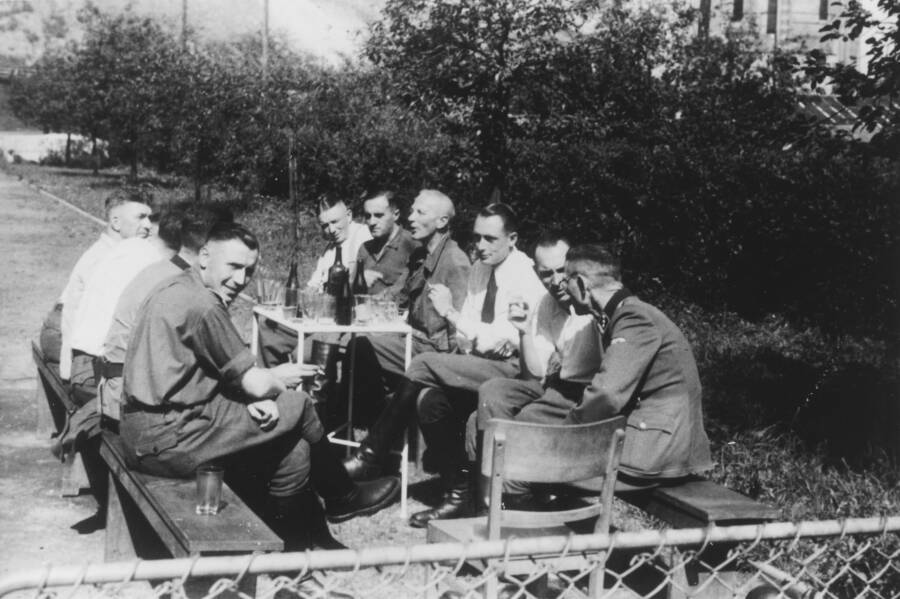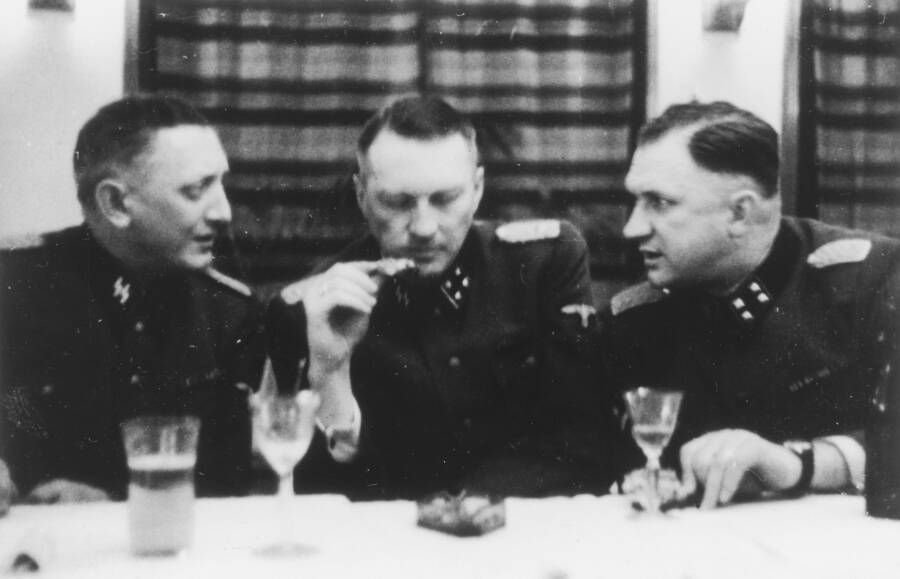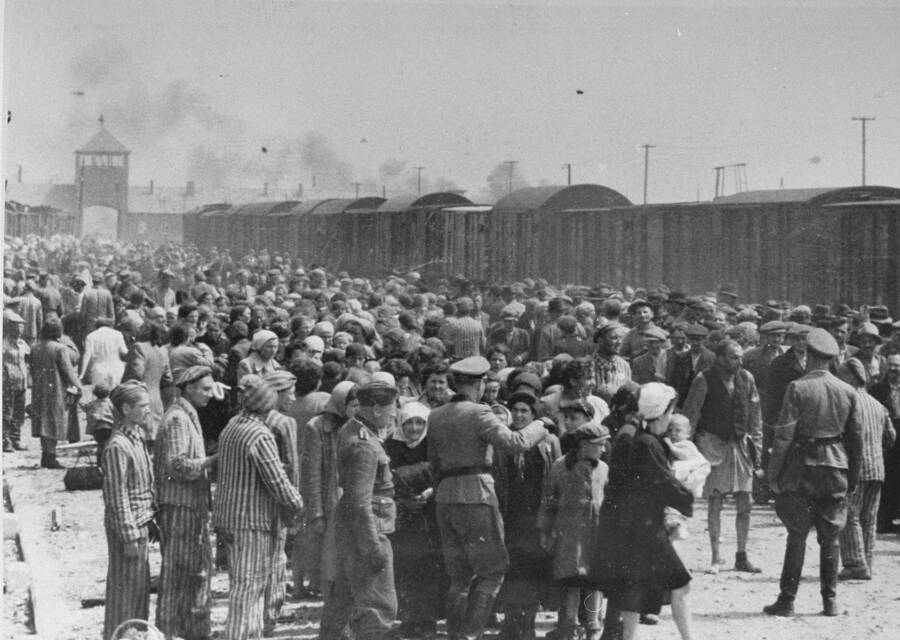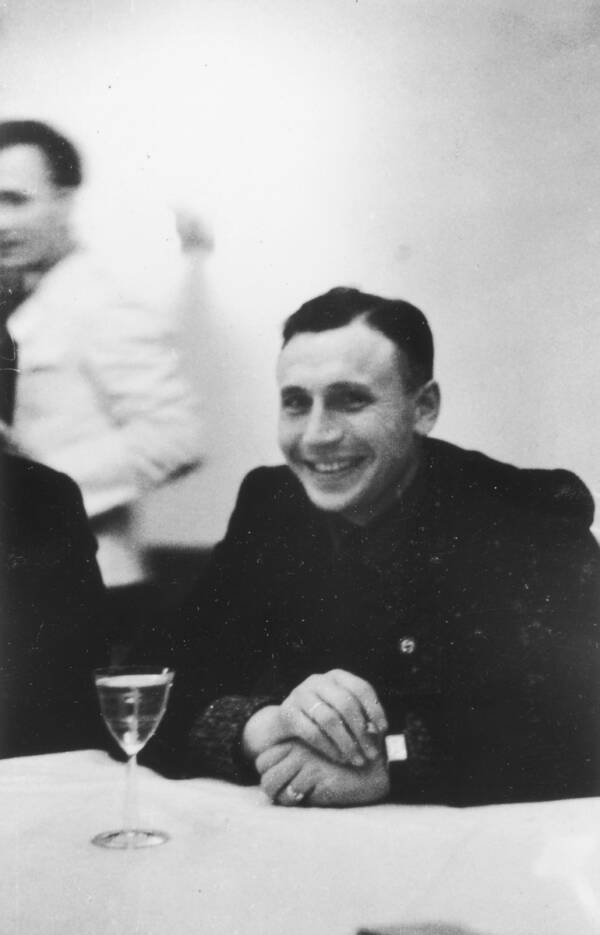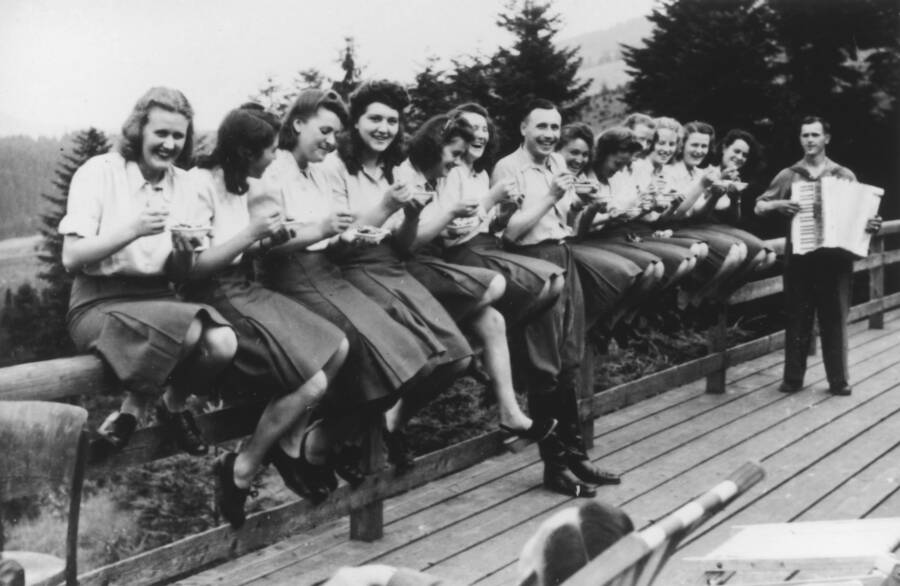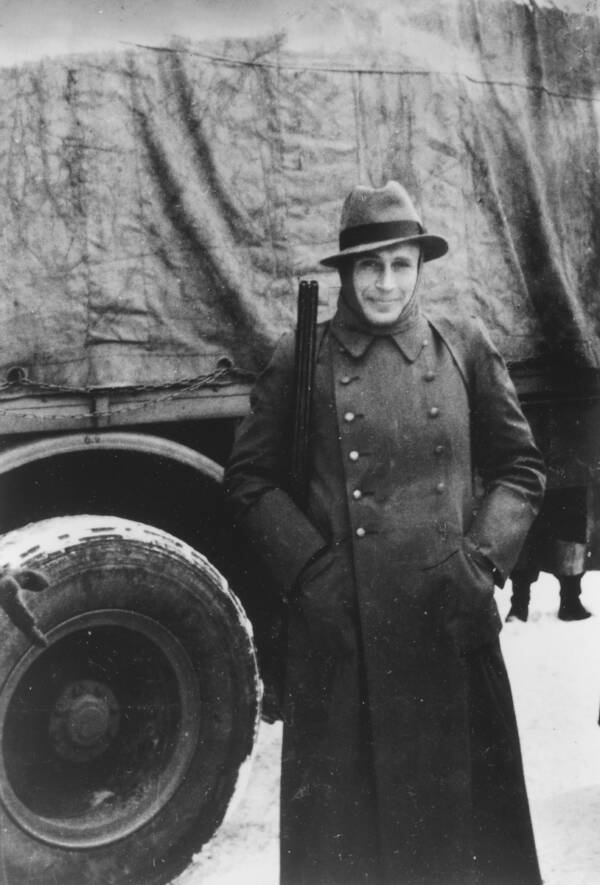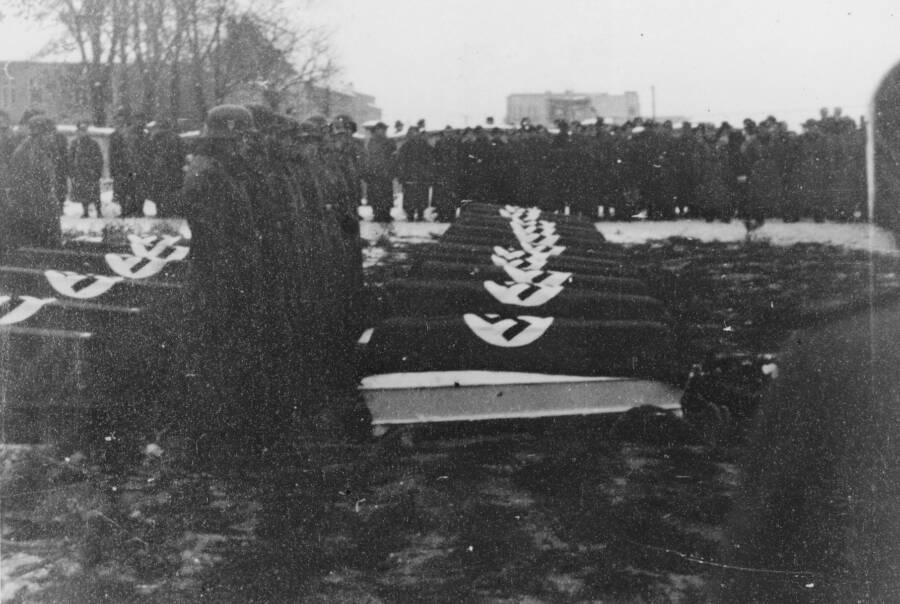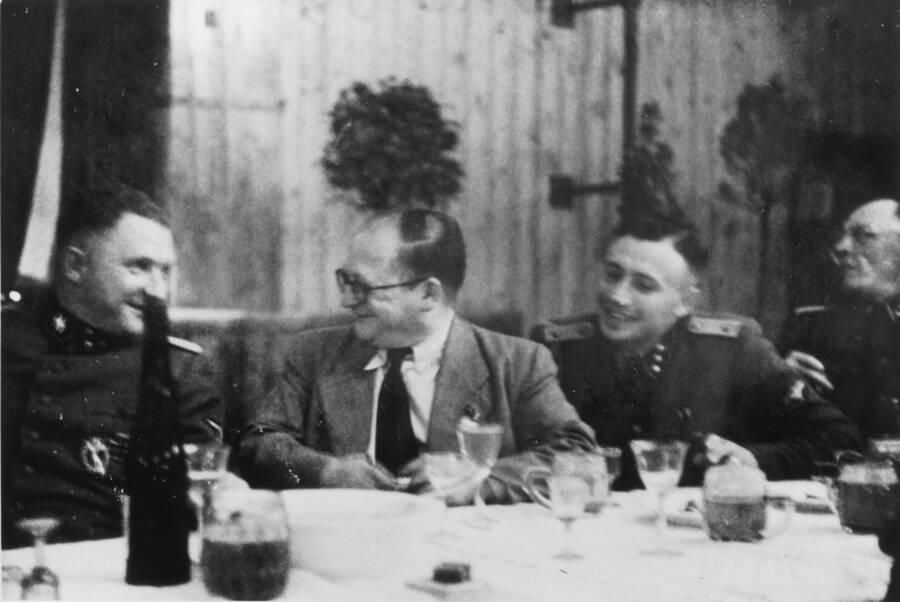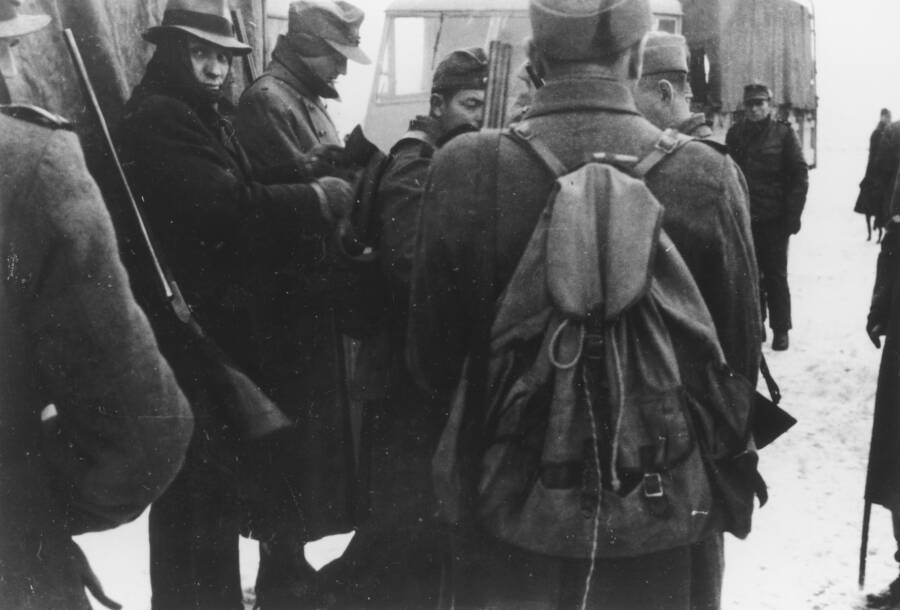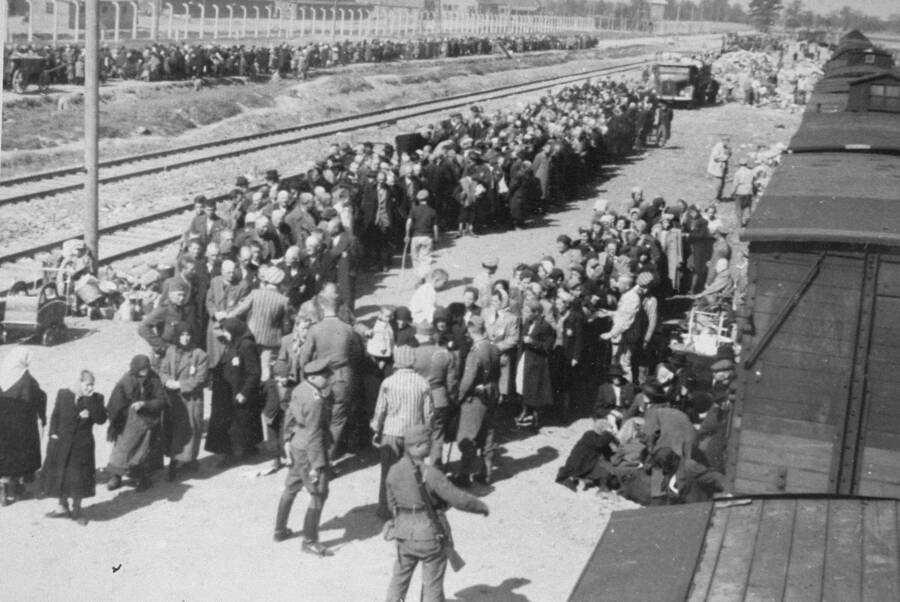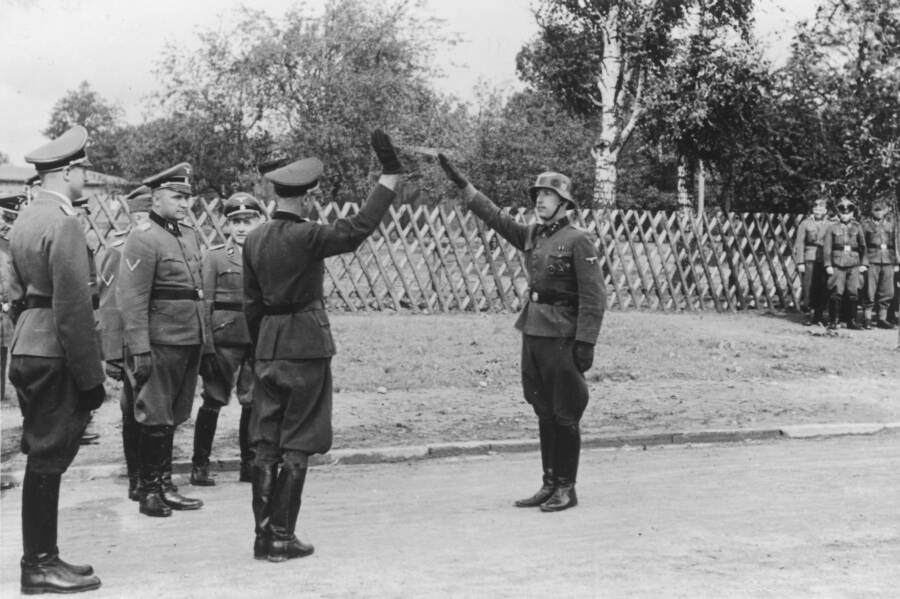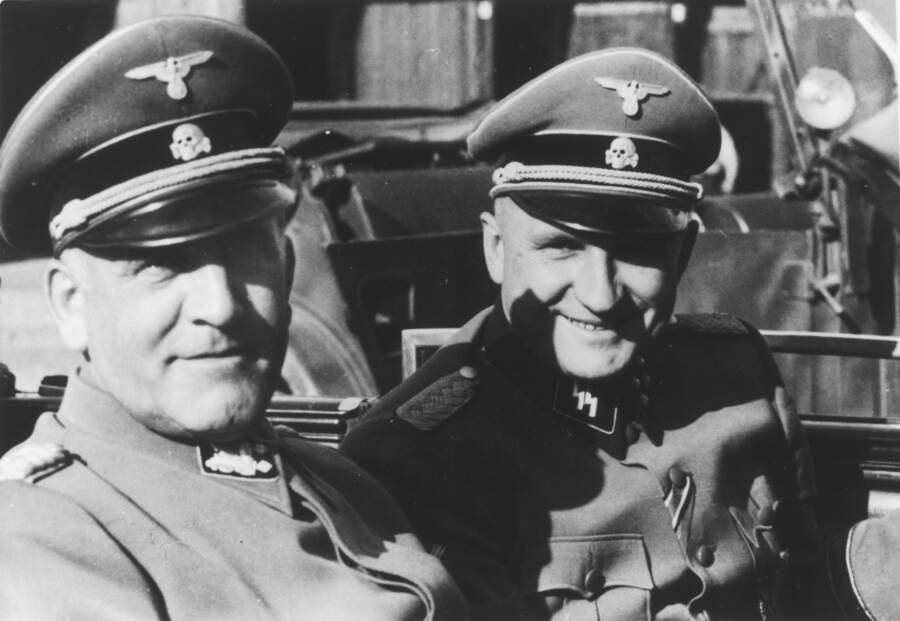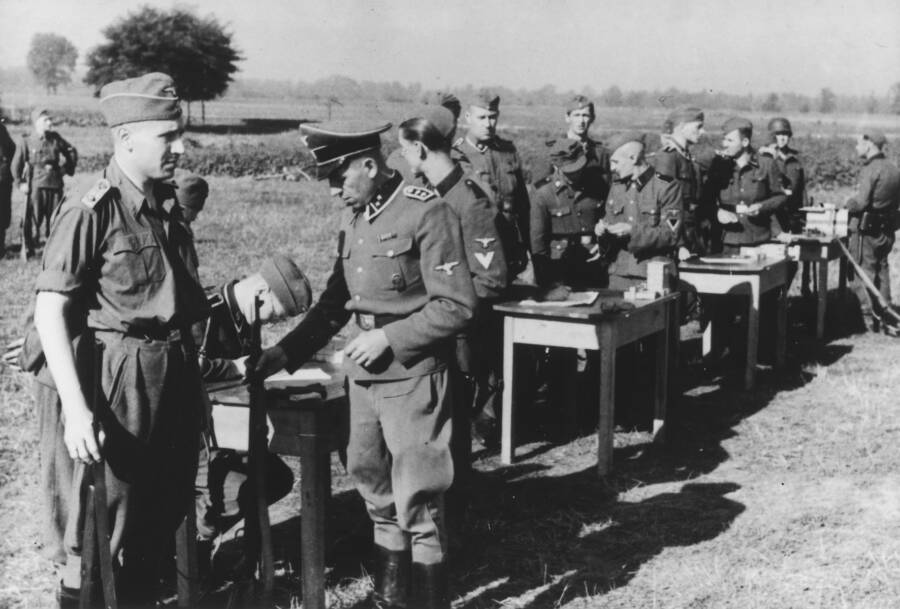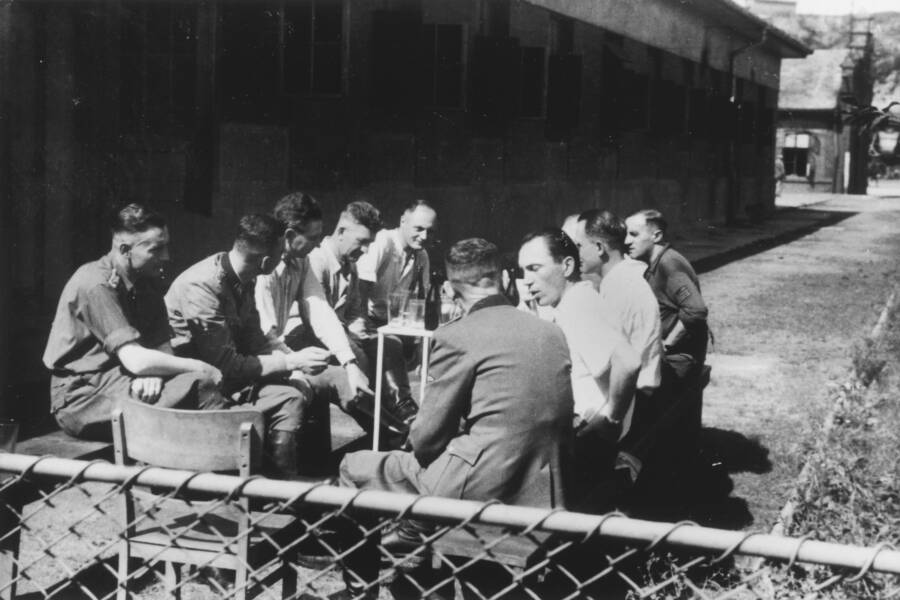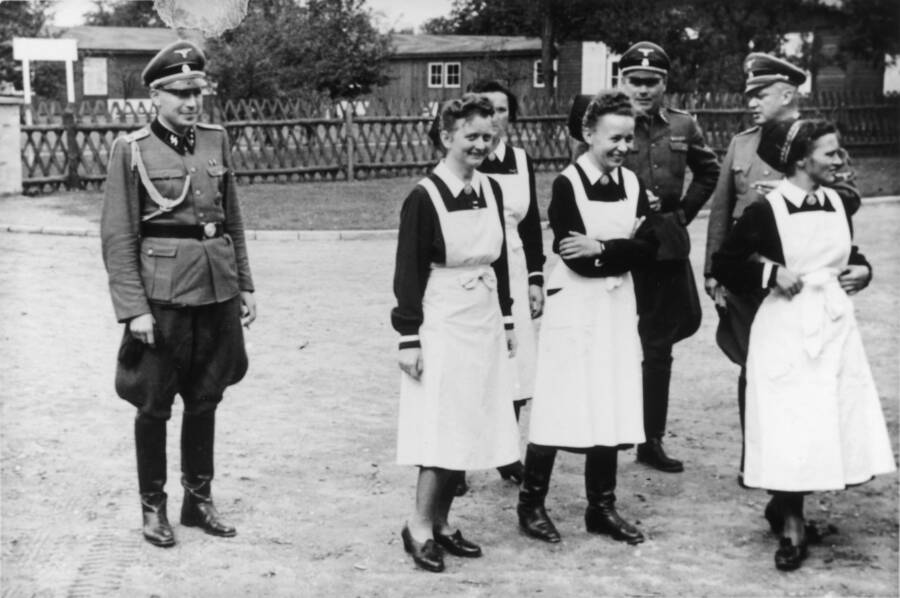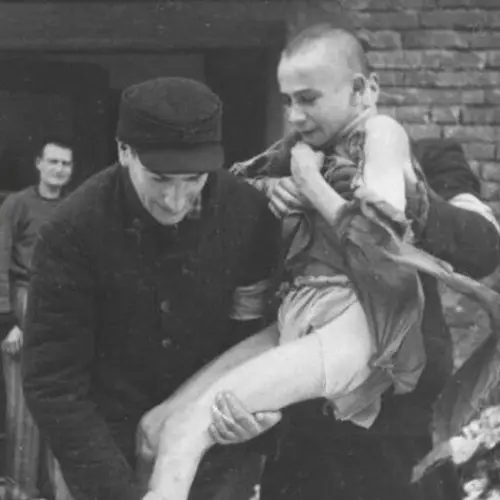In 2007, one Nazi officer's photo album came to light and revealed the gleeful private lives of the SS guards who worked inside the deadliest extermination camp of the Holocaust.
Most photos taken during the Holocaust era capture moments when death camps were liberated, such as the infamous Auschwitz-Birkenau camp where more than a million prisoners perished. However, not many photos exist of the camps during their operations.
But an album of photographs, discovered by a U.S. Army officer after the end of the war, shows Karl Höcker, a former SS commandant deputy who oversaw operations at Auschwitz, and other SS officers enjoying leisure activities at the concentration camp. It's a rare glimpse into the lives of the Nazi officers who were responsible for torturing and killing millions.
The Discovery Of Karl Höcker's Photographs

United States Holocaust Memorial MuseumOriginal page from the photo album showing SS officer Karl Höcker playing with his dog.
In January 2007, the United States Holocaust Memorial Museum Archives received a donated photo album inscribed with the label "Auschwitz 21.6.1944." Most of the album's photographs captured the same person repeatedly: SS-Obersturmführer Karl Höcker, the right-hand man to the commandant of Auschwitz, SS-Sturmbannführer Richard Baer.
Though Höcker's name does not appear anywhere in the album, historians were able to discern his identity by the cords displayed on his uniform in the photos. The repeat appearances throughout the album suggested it likely belonged to Höcker, who was stationed at Auschwitz from May 1944 until the evacuation of the camp in January 1945.
The album was donated by a retired U.S. Army Lieutenant Colonel and former member of the Counter Intelligence Corps (CIC).
According to the accompanying letter to the museum, the former lieutenant colonel uncovered the photo album in an abandoned apartment in Frankfurt during his 1946 post in Germany.
Now in his elderly years and wishing to maintain anonymity, he wrote that he was ready to release ownership of the album to the museum. The donation has since become a valuable addition to the museum's archive collection.
Who Was Karl Höcker?
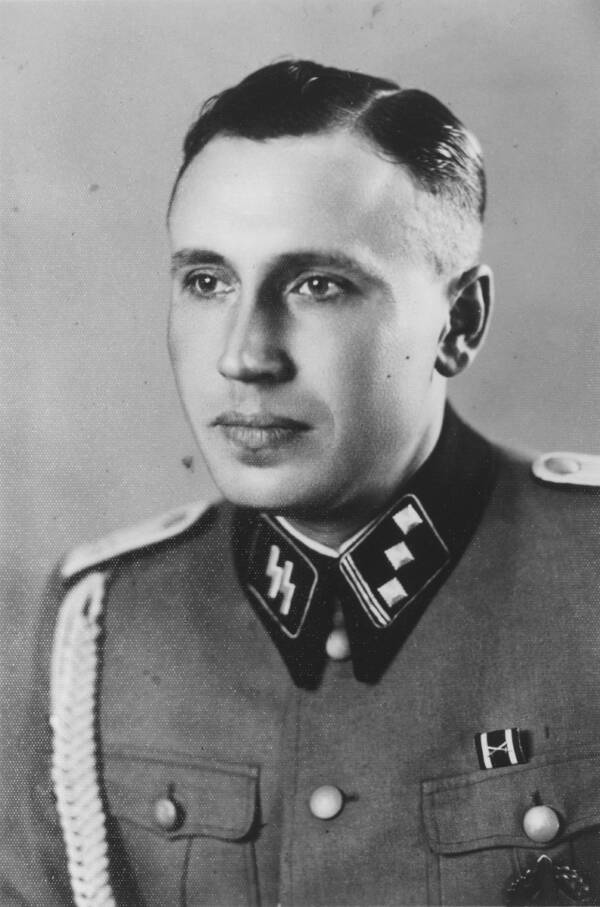
United States Holocaust Memorial MuseumKarl Höcker, an SS deputy commander who oversaw operations at Auschwitz.
In 1911, Karl Höcker was the youngest born in a family of six. His mother struggled to keep the family afloat after his father, who worked as a construction worker, was killed in World War I.
Later in life, Höcker got a job as a bank teller. He joined the SS in 1933, and when World War II broke out, he was assigned to the Neuengamme concentration camp.
By 1943, he attained the rank of adjutant — basically the role of a deputy — to the commandant at Lublin-Majdanek. In November of that year, thousands of Jews at Majdanek was shot to death over the course of 48 hours, in fear that they would be inspired to rebel by recent uprisings in Treblinka and Sobibór.
The deaths at Majdanek of some 18,000 prisoners combined with two other camps that had carried out the same order totaled at least 42,000. After the war, the slaughtering at Majdanek would come to be recognized as the largest single-day, single-location massacre of the Holocaust.
When SS-Sturmbannführer Richard Baer became the commandant of Auschwitz in May 1944, Höcker became his adjutant and oversaw the camp's operations until it was liberated by the Allies. He fled before the Allied troops arrived but he was later captured by British soldiers near Hamburg.
However, the British soldiers had no idea who he was, since Höcker had somehow got his hands on the identification materials of a combat soldier instead. The British soldiers released him in 1946 after detaining him for a year and a half in a war camp.
Höcker continued to evade prosecution for his war crimes as an adjutant SS officer in the later years of his life. He resumed a normal life with his wife and two children in Engershausen, even managing to secure a job as the chief cashier of a regional bank in Lübbecke.
Although Karl Höcker lost his job after he was indicted in 1963 during the Frankfurt Auschwitz proceedings, he was later rehired in 1970 after he was released from prison. Höcker would spend several more decades living as a free man, not meeting his death until the age of 89 in 2000.
A Different Look At The Holocaust
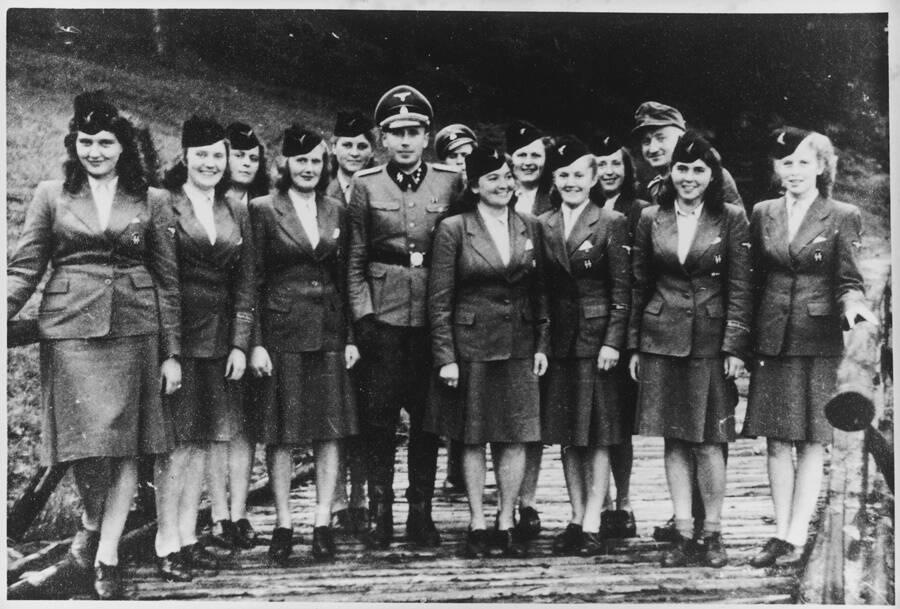
United States Holocaust Memorial MuseumThe photographs of the SS officers at Auschwitz paint a sharp contrast against the harsh realities of the Holocaust.
The photographs inside the album offer a remarkable look into a different side of the Holocaust: the perspective of the SS officers.
Many of the photographs show Karl Höcker with other SS officers at the Auschwitz death camp, likely between the summer and fall of 1944. It was the same time that the notorious camp's gas chambers were operating at maximum efficiency, when the Hungarian Jews arrived during the last months before the evacuation of Auschwitz.
Photographs inside the album documented special ceremonies conducted by the Nazis, such as a hospital's dedication ceremony and a military tribute.
The album also shows that in the final months of the war — after the Soviets liberated concentration camps in the east — SS officers at Auschwitz continued to revel in their social functions.
Photographs include Karl Höcker playing with his pet German Shepherd, lighting up a Christmas tree, and joking with other Nazi officials. There are also photographs of the SS officers wining and dining nearby Auschwitz.
Other photos show the Nazi officers enjoying a relaxing time sunbathing and eating blueberries at Solahütte (or Solahuette), a famous Nazi holiday camp that was located less than 20 miles from Auschwitz.
These images offer an unfathomable contrast to the horrors that happened during the Holocaust and serve as a sobering reminder that merely possessing an appetite for life and its simple pleasures is no guarantee that a person will not just as eagerly take life and forever deny those same pleasures to others.
Now that you've glanced at the life of SS guards during the Holocaust, read about Ernst Kaltenbrunner, the highest-ranking Nazi to face justice at Nuremberg. Next, meet Simon Wiesenthal, the badass Holocaust survivor-turned-Nazi hunter.

